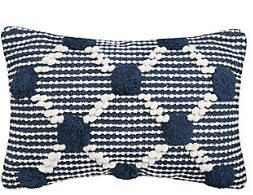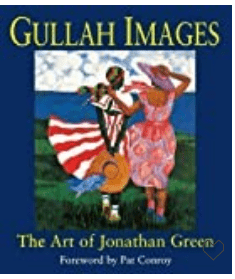
There is another story of Thanksgiving, community and food that is worth discussing if not more truthful (and powerful) than the holiday many of us will be gathering together to observe. This story is about the Black Seminoles of Florida.
Explore the Food Heritage of Black Seminoles of Florida
University of Florida scholar Dr. Amanda Concha-Holmes told WUFT-NPR, “‘It was 1693, that the king of Spain decreed that if you can make it to Florida — so the first underground railroad – then you’ll get your freedom.’” The pathway to freedom for the people who would become Black Seminoles or Seminole Maroons included danger, but help would come in the form of the newly formed Seminole tribe who offered refuge to freedom-seekers.
Public historian and Black Seminole descendant Windy Goodloe is a keeper of her family’s unique cultural heritage. She is quick to assert that “Black Seminoles are both Black and indigenous.” One of Goodloe’s heroes is the late oral historian, educator and Black Seminole matriarch Charles Emily Wilson told the Center for Folklife and Cultural Heritage of the Smithsonian Institution, “Our people have lived in Texas for over 100 years. Before that, we were in Mexico, where some of us still live, and before that we were in Oklahoma, and even earlier than that, Florida. And before that, we came from Africa.”
Charles Emily Wilson (SEMINOLE INDIAN SCOUTS CEMETERY ASSOCIATION)
Goodloe believes that to disregard African descendancy is to disregard the truth of Black Seminole history, a history that begins with freedom seeking Africans in the late 1600s. Over time, the Maroons and Seminoles forged an alliance, fought wars together, and formed a powerful alliance against white planters who considered them a threat.The relationship became an agreement that involved the Seminoles extending membership to the Maroons.They lived cooperatively.
Seminole Maroons participated in some Seminole (the only federally-recognized tribe to own the distinction of having never signed a peace treaty) rituals but overall insisted on keeping many of the African-based traditions they brought with them. And that includes a language, Afro-Seminole Creole, which was called “the Geechee” and has origins with the Gullah-Geechee people of Georgia and South Carolina. Why? The first Maroons in North Central Florida were Gullah freedom seekers. The language is a hybrid of Gullah, Seminole and English, and is reminiscent of other languages found in the West Indies, Africa and the United States.
Erreh peepil whey nuh ha dem own language nummuh duh hahf a peepil
Any people that do not have their own language
are only half a people
(Researched, written and interpreted by linguistic scholar Ian Hancock, Afro-Seminole Creole Revitalization Project)
Goodloe stated that Ian Hancock’s generosity and expertise are assisting Black Seminoles in Florida, Texas and Oklahoma revitalize the language for future generations. Hancock went above and beyond by including recipes and a vocabulary to read the recipes that are written in Afro-Seminole Creole.
The significance of the recipes is that they draw a direct connection to Africa and the African Diaspora, and the relationship between the Maroons and Seminole people. In fact, many of the recipes are close cousins of some southern, South American and Caribbean dishes many Black families enjoy.
Akara
Photo: Ian Hankcock
Akara is a ground black eyed pea fritter with a texture and shape most times similar to a hushpuppy. Akara is a West African that is believed to have traveled with the freedom-seeking Gullah to Florida. The recipe Hancock provides states, “One lilly poke a blackeye pea, de fresh one ef yuh kin fine um, nuh de dry one dem.”
Sofkee (Suffki, Softkey, Sofke, Sofkey, Sofky, Osafke)
Sofkee is cracked white corn cooked in an alkaline water that can be served as a hot or cold drink or hot porridge or soup. It is soured by fermentation. It is similar to a savory, unsweetened corn chowder though it can be sweetened with molasses. This dish was likely introduced to Maroons and adopted as a staple.
Battle Brade/Battle Bread
Photo: Ian Hancock
Battle Brade/Battle Bread is a battered cake-like bread that often contains pumpkin or some other type of gourd food.
Akara, Battle Brade and Softee are only three of the foods with roots in both Black Seminole and Seminole culture. Animal proteins eaten by Black Seminoles include wild game (venison, alligator, manatee), turtle, and fish (gar, catfish, carp, bass, eel, and pickerel), including seafood. It should be noted that they were also great foragers, knowing which weeds and fungi could be used for food preparation like making flour. When addressing the the Center for Folklife and Cultural Heritage of the Smithsonian Institution, Charles Emily Wilson wrote of a communal pounding technique associated with “The African style large wooden mortar and pestle was part of the early Seminole food preparation tools. They used it to process corn, grains, seeds, and coontie roots.”
Courtesy of the Broward County Historical Commission
The relationship between the Seminole people and the Seminole Maroons began on a welcoming note that blossomed into a kinship based on mutual struggle, the need to be free and live free. The foodways and lifestyles overlapped with both the Seminole and the Black Seminole keeping the traditions they entered the relationship with.
“For more than 200 years we kept our double African and Indian heritage alive. Our language and our way of life, our songs and dancing, our philosophy and our cooking all remind us of our distinctive roots.” – Charles Emily Wilson
To learn more:
African Influence on the Seminole Indians of Florida
The Alliance of Blacks and Seminoles
DEDICATED TO PRESERVING OUR LEGACY:
A BRIEF HISTORY OF Seminole Indian Scouts Cemetery Association

































































